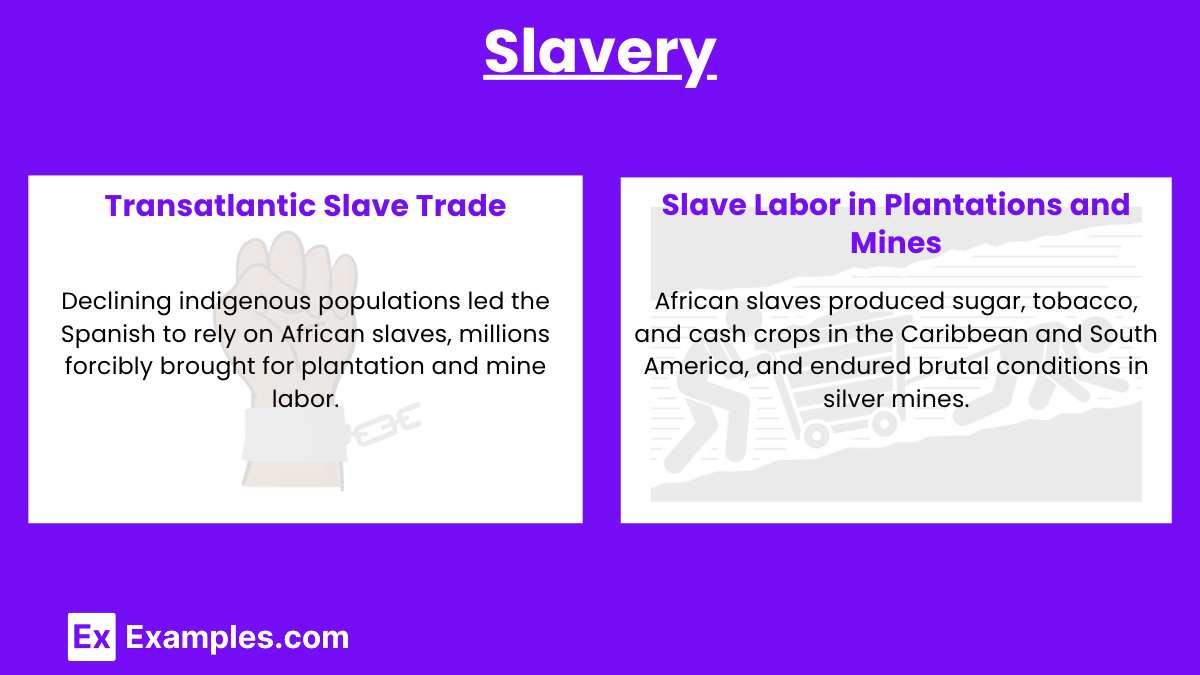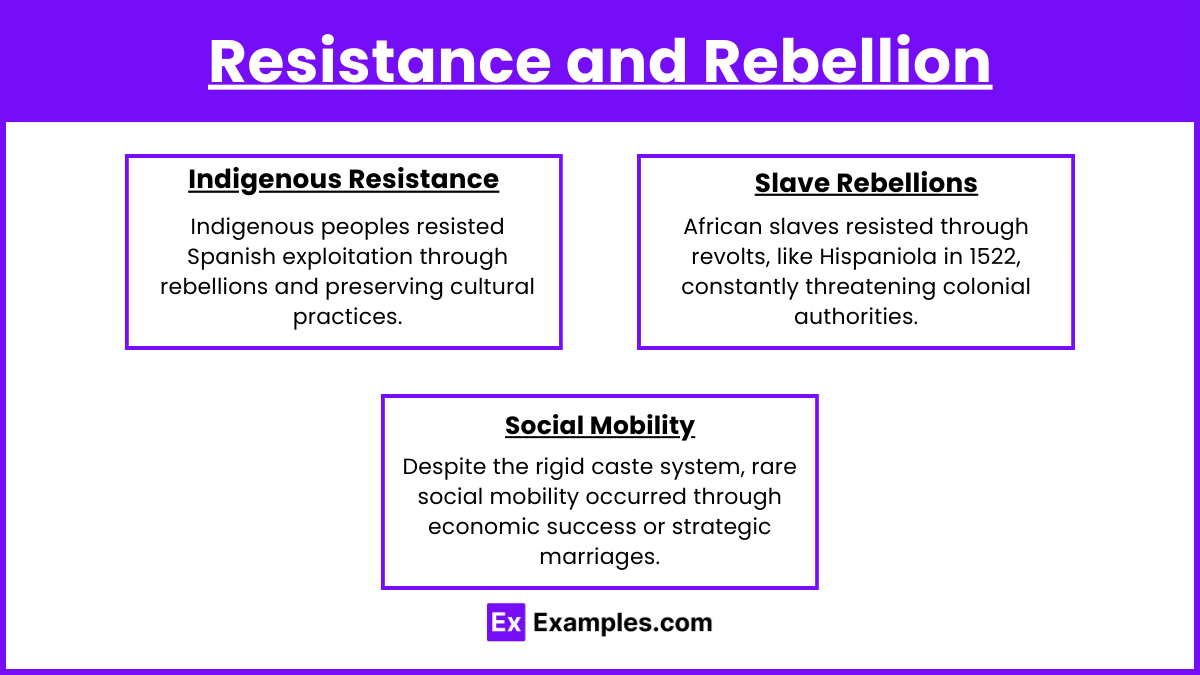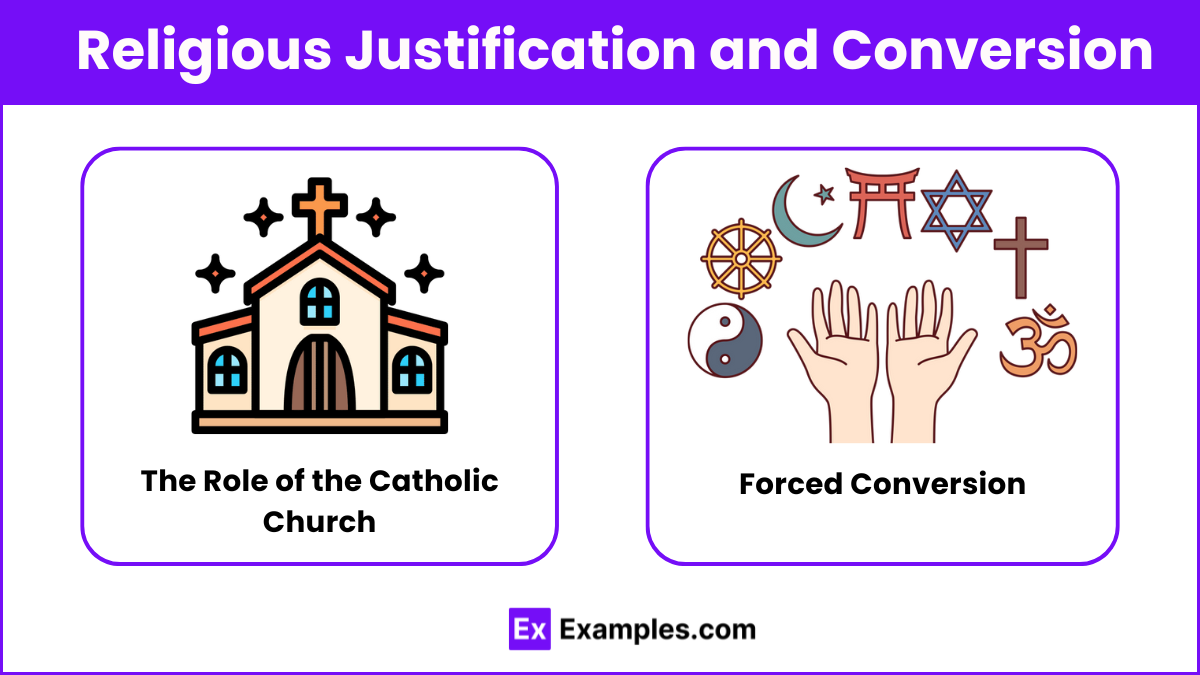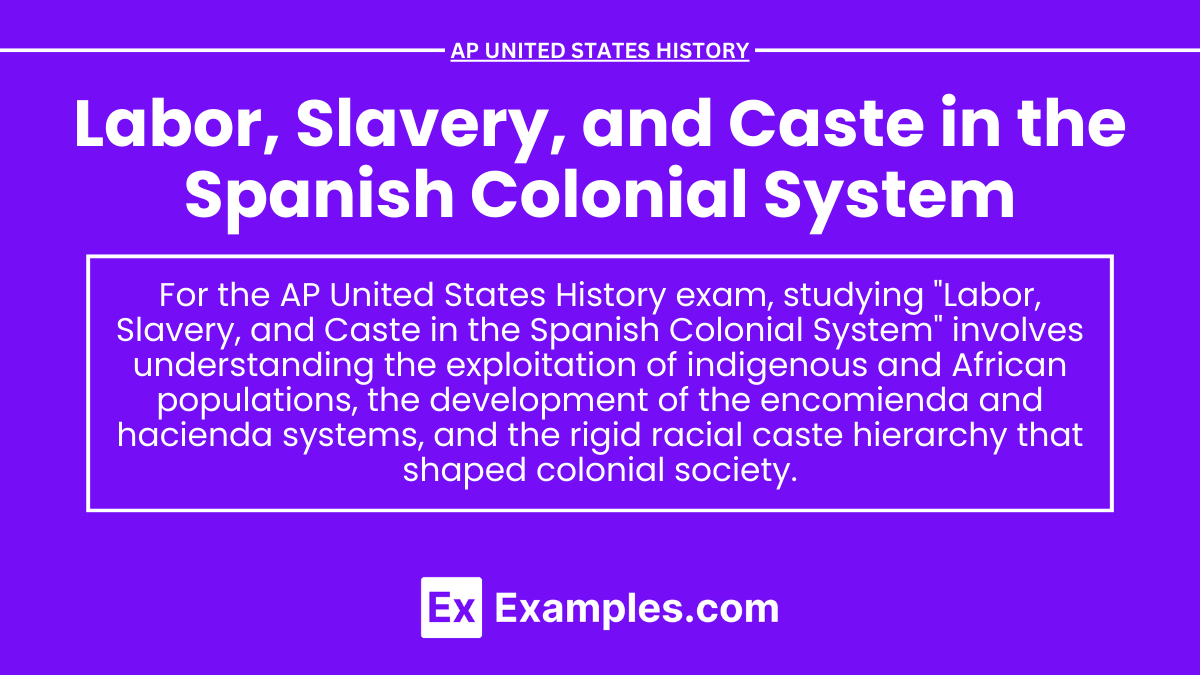In AP United States History, the study of labor, slavery, and caste in the Spanish colonial system reveals the profound social and economic structures that defined Spanish America. The Spanish established a hierarchical society where indigenous peoples and African slaves were exploited through systems like encomienda, repartimiento, and the transatlantic slave trade. The rigid caste system enforced racial and social stratification, ensuring European dominance while shaping the colonies' labor dynamics, social interactions, and long-lasting racial inequalities that persisted throughout the colonial period and beyond.
Free AP United States History Practice Test
Learning Objectives
In studying labor, slavery, and caste in the Spanish colonial system, you will be introduced to the exploitation of indigenous peoples and African slaves through systems like encomienda and repartimiento. The rigid caste hierarchy based on race and ancestry will be examined, highlighting its role in maintaining European dominance. You will also explore the social, economic, and cultural impacts of these practices on colonial society and understand the lasting consequences of these systems in shaping racial and social dynamics in the Americas.
Labor Systems

Encomienda System: One of the earliest labor systems established by the Spanish, the encomienda granted Spanish colonists the right to extract labor and tribute from indigenous communities in exchange for providing protection and religious instruction. In practice, it often resulted in severe exploitation and abuse of the native population.
Repartimiento System: A reform intended to replace the encomienda, the repartimiento required indigenous communities to provide labor to Spanish landowners for a certain number of days each year. Although it was supposed to be less exploitative, in practice, it still subjected natives to harsh conditions.
Hacienda System: Large estates known as haciendas became prominent in the Spanish colonies, where labor was provided by indigenous workers who were often tied to the land in a quasi-feudal relationship. This system was prevalent in agricultural regions, particularly in Mexico and Peru.
Slavery

Transatlantic Slave Trade: Due to the declining indigenous population from disease and overwork, the Spanish increasingly relied on African slaves. Millions of Africans were forcibly brought to the Americas through the transatlantic slave trade, particularly to work in plantations and mines.
Slave Labor in Plantations and Mines: African slaves were primarily employed in the production of sugar, tobacco, and other cash crops in the Caribbean and South America. They also worked in silver mines, such as those in Potosí (present-day Bolivia), where conditions were notoriously brutal.
Caste System (Sistema de Castas)

Social Hierarchy: The Spanish colonial caste system was a rigid social structure based on race, where individuals were classified according to their ancestry and place of birth. At the top were the Peninsulares (Spaniards born in Spain), followed by the Creoles (Spaniards born in the Americas), and then the mixed-race Mestizos (Spanish and indigenous), Mulattoes (Spanish and African), and Zambos (African and indigenous).
Impact on Society: The caste system reinforced the dominance of Europeans while marginalizing indigenous peoples, Africans, and their descendants. This hierarchy affected every aspect of colonial life, from legal rights and economic opportunities to marriage and social status.
Casta Paintings: These paintings, popular in the 18th century, depicted the various racial combinations in the Spanish colonies and illustrated the perceived hierarchy. They were used to reinforce the caste system by visually documenting the different racial mixtures and their associated statuses.
Resistance and Rebellion

Indigenous Resistance: Indigenous peoples resisted Spanish exploitation through various means, including armed rebellions, such as the Pueblo Revolt of 1680, and subtle forms of resistance like work slowdowns and the preservation of cultural practices.
Slave Rebellions: African slaves also resisted their conditions, leading to revolts such as the one in Hispaniola in 1522. Although most rebellions were suppressed, they were a constant threat to the colonial authorities.
Social Mobility: Despite the rigid caste system, there were cases of social mobility, particularly through economic success or strategic marriages, though these were exceptions rather than the rule.
Religious Justification and Conversion

The Role of the Catholic Church: The Spanish justified their exploitation of indigenous peoples and Africans through a religious mandate, claiming to bring Christianity to "heathens." Missionaries often played a dual role of conversion and cultural assimilation, though some, like Bartolomé de las Casas, criticized the harsh treatment of natives.
Forced Conversion: Indigenous peoples and African slaves were often forcibly converted to Christianity, and their traditional religions and practices were suppressed. The church was a powerful institution in the colonies, influencing social, cultural, and political life.
Examples
Encomienda System: The exploitation of the Taíno people in the Caribbean under the encomienda system led to a drastic population decline due to overwork and disease. This system was a model for other parts of Spanish America.
Potosí Silver Mines: The silver mines in Potosí, Bolivia, became infamous for their brutal conditions. Indigenous and African slaves were forced to work under hazardous conditions, contributing vast wealth to the Spanish Empire at the cost of countless lives.
Pueblo Revolt of 1680: A significant indigenous uprising in present-day New Mexico, where Pueblo people successfully expelled the Spanish from the region for over a decade. This revolt was a direct response to Spanish exploitation and forced religious conversion.
Casta Paintings: These paintings were used to depict and reinforce the racial hierarchy of the Spanish colonies, showing the different combinations of mixed-race individuals and their supposed social standing.
Hacienda System: Large agricultural estates like those in Mexico were worked by indigenous laborers who were often tied to the land through debt peonage, creating a system of semi-feudal labor relations that persisted into the modern era.
Multiple Choice Questions (MCQs)
Which labor system granted Spanish colonists the right to extract labor and tribute from indigenous communities in exchange for providing protection and religious instruction?
A. Repartimiento
B. Encomienda
C. Hacienda
D. Mita
Answer: B
Explanation: The encomienda system allowed Spanish colonists to extract labor and tribute from indigenous peoples in return for providing them with protection and religious instruction. In reality, it often led to severe exploitation.
What was the primary purpose of the Spanish caste system in the colonies?
A. To ensure equal rights for all individuals
B. To classify people based on their wealth
C. To maintain European dominance by ranking individuals according to race and ancestry
D. To promote social mobility based on merit
Answer: C
Explanation: The Spanish caste system was designed to maintain European dominance by creating a strict social hierarchy based on race, ancestry, and birthplace, marginalizing indigenous and African populations.
Which of the following was a major consequence of the transatlantic slave trade in the Spanish colonies?
A. The decline of plantation economies
B. The introduction of wage labor
C. The establishment of a racially stratified society
D. The end of the encomienda system
Answer: C
Explanation: The transatlantic slave trade led to the establishment of a racially stratified society in the Spanish colonies, where African slaves and their descendants were at the bottom of the social hierarchy, further entrenching racial divisions.


